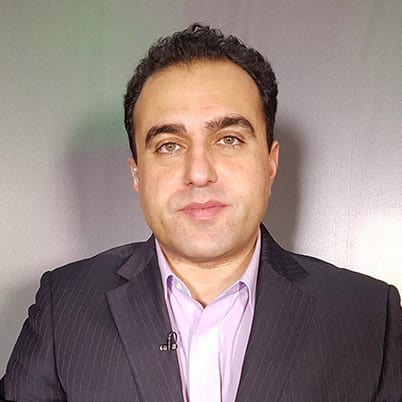Last Thursday’s US strike on a pro-Iranian armed group in the desert west of Syria’s Al-Tanf is being widely interpreted as a significant escalation in the Syrian conflict. The incident is all the more serious if reports that not only Iraqi militiamen but also Iranian military personnel were targeted turn out to be true.
Despite American protestations to the contrary, it is clear that this strike – coupled with the cruise missile strike on the Shayrat air base in early April – signal a policy shift in the Syrian conflict. In so far as south and south-eastern regions of Syria are concerned, the US has established a military presence on the ground whose main mission is not to fight Daesh, but to militarily confront Iran and its proxies.
This poorly conceived US strategy may arrest Iranian momentum in the short term, but the inevitable escalation, not just in Syria but across the region, not only fails to resolve the underlying issues but in fact risks deepening existing fissures as well as creating new tension points.
The road to Baghdad
The area northwest of the southern town of Al-Tanf is militarily important in so far as control of it would provide secure access to the Jordanian and, more importantly, Iraqi border. This is of considerable strategic importance to Iran which is anxious to establish a safe land route from Baghdad to Damascus.
Read: Putin’s secret weapon in Syria: Sunni-Muslim Chechen forces
Unsubstantiated strategic plans notwithstanding, it would nevertheless make sense for Iran to have reliable land routes joining Iraq, Syria and Lebanon. From a purely threat management point of view, the Islamic Republic needs this connectivity to quickly ferry people and supplies across borders with a view to defending its Levantine allies and interests.
Another major worry for Iran is that the US military build-up in southern Syria is part of a US plan to build and maintain a long-term military presence in the country. What started as modest a plan to train Syrian opposition groups in Jordan ostensibly for the fight against Daesh has developed into a well-fortified US and UK Special Forces base in Al-Tanf.
The American and British military base in Al-Tanf is complemented by the deployment of US troops further north as part of a mission to ostensibly train and equip Syrian Democratic Forces (SDF) militias. In reality that deployment is a reflection of the US alliance with the PKK-connected People’s Protection Units (YPG), which totally dominates the SDF militias.
#WarInSyria
The spectre of a near-permanent US military presence in the south and east of Syria is alarming to Iran at many levels. Foremost, there is the immediate problem of delaying the restoration of Syrian sovereignty by allowing Syrian forces to fully control the border with Iraq and Jordan.
More broadly, the US and British presence, coupled with the deployment of myriad local pro-Western militias, will be interpreted in Tehran as part of a comprehensive strategy to prolong the Syrian conflict, or failing that, to at least deny the Syrian government the opportunity to retake the whole country.
Wider escalation?
The key question at this juncture is whether the Trump administration’s aggressive anti-Iranian policy in Syria will be replicated across the region. Trump’s visit to Saudi Arabia and his apparent embrace of the House of Saud’s blistering anti-Iranian rhetoric lends credence to this hypothesis.
The influential American magazine the Atlantic argues that Trump is heading toward wider confrontation with Iran even though the US is ill-prepared for the dizzying array of tough scenarios and unintended consequences which would inevitably flow from such a policy.
More broadly, some American commentators have lost little time in projecting last week’s strike as a model for further escalation with Iran and as an opportunity to roll back Iranian “expansionism”.
Rhetoric aside, the US will find it hard to find suitable targets or pressure points in the other two conflict zones where it could realistically intervene, namely Yemen and Iraq. In Yemen’s case, beside the fact that Iran is not directly involved, a more muscular US approach to the conflict with the Houthis risks intensifying Yemen’s broader centrifugal conflicts, notably the battle against southern secessionists and a proliferating jihadist presence.
Read: Iran to send more ‘military advisers’ to prop up Syria regime
Meanwhile in Iraq, an aggressive policy against Iranian-aligned militias is a very risky proposition in view of the idiosyncratic nature of post-Baathist Iraqi national security infrastructure where militias are either formally or informally extensions of the security forces. Moreover, Iraq is the only arena in the Middle East where Iranian and American interests converge (albeit on a fragile basis), and where both powers compete for influence with the Iraqi government as well as with the Kurdish administration in Erbil.
For their part, the Iranians appear to be preparing for choppy waters ahead. The General Staff of the Iranian armed forces’ latest communique, whilst not addressing the US directly, heaps defiant vitriol on the “reactionary” Arab rulers in the region and their putative alliance with Israel.
Iran and the US have not clashed directly since April 1988 during the final phase of the Iran-Iraq War. Even the US-led occupation of Iraq in 2003 and the subsequent attacks on US forces by pro-Iranian militias did not escalate to direct confrontation.
In theory, Iran could deploy the same model in the south and east of Syria, namely to use militias and proxy forces to retaliate against US aggression. However, the volatility of ground realities, coupled with the elevated strategic importance of the Syrian conflict, lends itself to rapid escalation.
In view of Trump’s volatility and grandstanding, a direct clash at some point is almost inevitable.
The views expressed in this article belong to the author and do not necessarily reflect the editorial policy of Middle East Monitor.


![US Army soldiers [US Army/Wikipedia]](https://i0.wp.com/www.middleeastmonitor.com/wp-content/uploads/2016/11/US-army.jpg?fit=1200%2C800&ssl=1)









